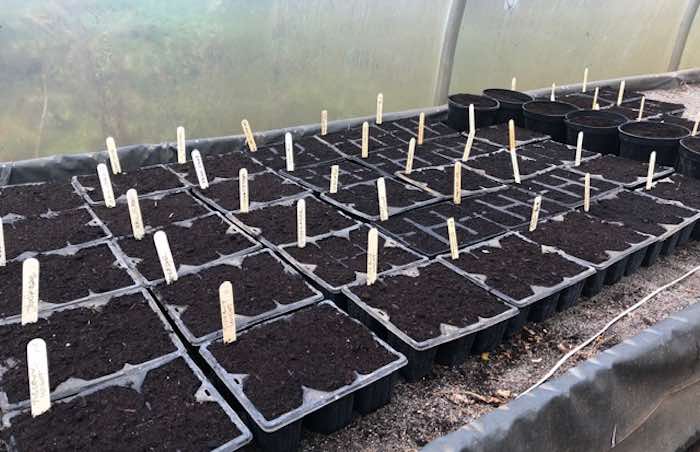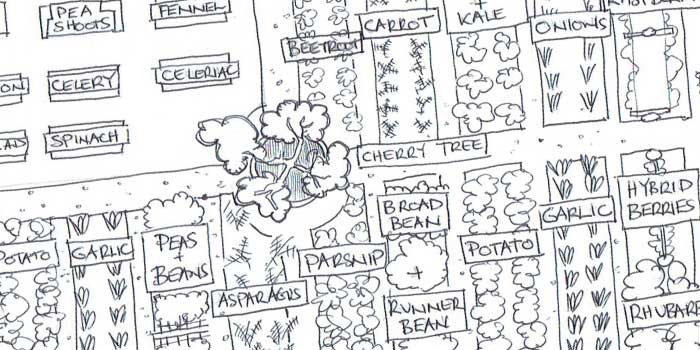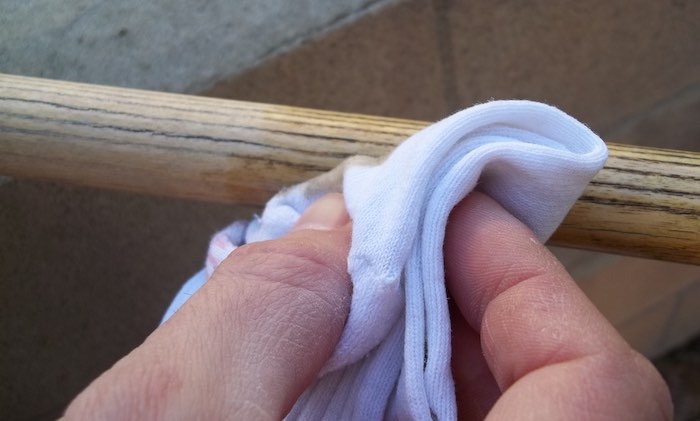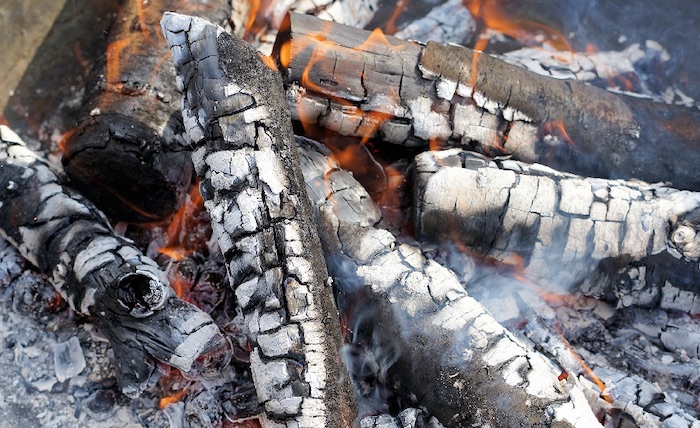November Tips in the Vegetable Garden
I feel a bit guilty about my post last week where I said there was nothing to do in the November garden so I thought I would offer a few tips today. It is true that there are very few vegetables to sow or plant in November but that doesn't mean the garden is redundant. Winter is the season for planting trees, hedging, fruit and other bare root stock while the plants are dormant. There is also plenty of planning and preparation that, if done now, will make next season a whole lot easier.

I might also make the point that the polytunnel or greenhouse can be a most pleasant place in winter, especially with a bit of sunshine, when they warm up very quickly. On Saturday, I decided to act on my garlic growing tip from last week and plant up some trays with some left over seed garlic. The sun was making an appearance between showers as I pushed garlic cloves into trays of soft compost before arranging them on the heat bench. Using a heat bench is not necessary and a bit of a luxury but I do use it if I've left planting till November as the garlic will sprout and root quicker.

The idea of planting garlic in modular trays is you will get more growth out of them in the tunnel than you would outside. The result is that the garlic plants will be larger than those planted directly in the soil so you should get a larger finished crop. Module growing is an effective method for avoiding cold and wet winter soil in more northerly gardens. Module grown garlic produces excellent bulbs, I grow most of my garlic this way and would be inclined to recommend it for all gardens with wet winters.

Sowing sweet peas You're probably bored to death with me going one about sweet peas but they gave me so much joy this year it's difficult not to. Teepees of sweet peas (oops) placed around the vegetable garden attract pollinators, look sensational and have a wonderful scent. Sweet peas are sown outdoors in March but you can sow indoors anytime between October and March.

Like garlic, overwintered sweet peas will produce larger plants. Sweet peas sown in October/November will also flower earlier, as early as late May in southerly gardens. As shown above I use deep rootrainers to start seedlings off and usually pot on to larger pots when I pinch out the tips in January. Pinching the out the tips (after 2 sets of leaves have formed) causes the plants to branch out and produce more flower bearing stems. It is Important that plants get plenty of cold over the winter, pampered seedlings will produce weak plants.

Deep Rootrainers
View Product
Garden Plan It might seem a bit early to draw up next year's garden plan but it makes a lot of practical sense. For one thing, you can start getting excited about next year and, by drawing a scale plan, can work out how many plants you can fit in. If you are preparing your soil now it is helpful to know where everything is going so you are accurate with your soil amendments. Members of the cabbage family like plenty of well rotted manure, for example, while carrots will be happier in a leaner soil.
A garden plan is also important for crop rotation se we can avoid growing a crop in the same location year after year. The reason we move plants around the garden is to avoid the build up of pests or disease associated with that crop.

Taking care of your tools Taking care or wooden tool handles will extend their life considerably and make them more pleasant to use. Rubbing in a wood oil like linseed oil or similar will reduce cracking, help protect against rot and keep the wood smooth and supple. Give the handles a scrub followed by a light sanding before applying the oil, the result will be tool you can't wait to use.

Using wood ash in the garden If you burn wood in a stove or open fire at home or use a bonfire to process garden waste be sure to keep the wood ash. The fine, grey powder left over from a wood fire is alkaline and high in potash (potassium) so has a number of uses around the garden. Potash is very soluble so keep wood ash dry until you need to use it, if left outdoors in a bucket or barrow it will be close to useless.
I have mentioned on a number of occasions that wood ash is good raked into the soil when planting garlic or onions but it will also be good as a potash feed for fruit (including tomatoes). If you are growing gooseberries or currants they will appreciate a dressing of ash around base of the bushes. Gooseberries and currants can be potash deficient (you will see tell tale yellowing of the leaf margins) and need potassium (potash) to set fruit and for use in the process of wood ripening which helps protect the bush from frost or insect damage.

As wood ash is alkaline it can also be used to re-balance a smelly compost heap. One of the most common problems with compost made with kitchen waste and lawn mowings is an acidic sludge that is slow to break down. Red composting (brandling) worms also prefer slightly alkaline soil to thrive so the addition of sparing amounts of wood ash will be beneficial for both.
Soil that has been regularly fertilised with cow manure will become slightly acidic over time. This can become a problem when growing brassicas because the dreaded club root thrives in acidic conditions. A generous sprinkle raked into the soil surface will help bring the pH back into balance.

